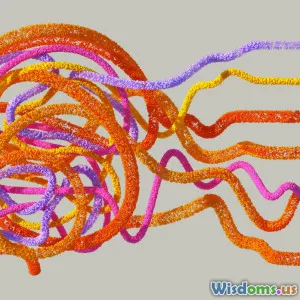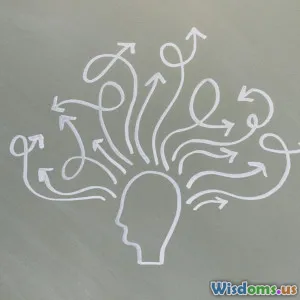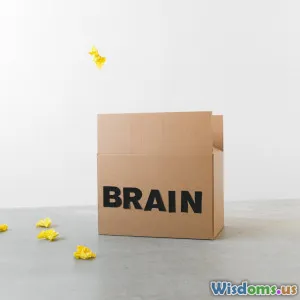
Harnessing Dreams for Creativity
9 min read Unlock the creative power of dreams through brain science insights and techniques. (0 Reviews)
Harnessing Dreams for Creativity: Insights from Brain Science
Dreams have fascinated humanity for millennia, often considered a window into our subconscious, a source of inspiration, or even prophetic tales. Yet, only recently has modern brain science started to unravel the biological and cognitive underpinnings of dreaming—shedding light on how these nocturnal narratives can be consciously harnessed to amplify creativity. This article delves into the science behind dreams, explores why they spark creative insights, and offers practical techniques to tap into this powerful mental resource.
The Intriguing Intersection Between Dreams and Creativity
The link between dreams and creativity isn't merely poetic or metaphoric; it has a solid grounding in neuroscience and cognitive psychology. During dreams, especially in the rapid eye movement (REM) phase, the brain exhibits unique activity patterns correlating with memory processing, emotional regulation, and creative thinking.
Neuroscientist Allan Hobson once described REM sleep as the mind's “creative laboratory.” This period supports hyper-associative thinking—the ability to form unique combinations between seemingly unrelated ideas—critical for originality in artistic creations, scientific breakthroughs, and problem-solving.
Scientific Findings on Dreams and Creative Insight
Research evidences the connection:
- A seminal 2004 study by Cai, Mednick, Harrison, Kanady, and Mednick at UC Berkeley showed that participants who napped with REM sleep were better at solving insight problems than those who didn’t sleep or who experienced only non-REM sleep.
- Studies using functional magnetic resonance imaging (fMRI) have documented increased activity in the brain's default mode network (DMN) during REM sleep, a system also engaged during imaginative daydreaming and spontaneous thought.
Famous Creatives Who Leveraged Dreams
Dreams have inspired many notable inventions and artistic works:
- Paul McCartney's tune “Yesterday” came to him during a dream.
- Dmitri Mendeleev reportedly dreamed the arrangement of the periodic table.
- Marie Curie and other scientists have shared accounts of dreams facilitating problem-solving or conceptual jumps that eluded waking thought.
These anecdotes highlight a creative goldmine uniquely afforded by the dreaming brain state.
Brain Science Explained: How Dreams Spark Creativity
Neural Mechanisms Supporting Creative Dreams
-
Memory Consolidation and Reorganization: During REM sleep, the hippocampus works with the cortex integrating fragmented memories, allowing novel associations to form by linking distant concepts stored separately.
-
Emotional Processing in Dreams: The amygdala’s activity peaks in REM, aiding emotional regulation. Emotionally resonant memories often spark vividly symbolic or surreal dream imagery that can inspire artistic expression or deep insight.
-
Reduced Prefrontal Cortex Activity: Logical reasoning regions in the brain are less active during REM, facilitating acceptance of illogical or novel ideas, enabling creative leaps without critical censorship — why dreams can be so bizarre yet profoundly meaningful.
Hyper-Associative Thinking and Creativity
Dreams exemplify “hyper-associative thinking”—the cognitive flexibility to connect unrelated ideas, essential for creativity. For instance, in problem-solving, this flexibility can lead to innovative solutions that conventional logical processing might overlook.
How to Harness Dreams to Boost Creativity
Modern brain science not only helps us understand dreams but also suggests concrete strategies to actively use them as creative tools.
1. Practice Dream Recall
Simply recalling dreams increases your ability to tap into dream insights:
- Keep a dream journal near your bed and write down all remembered fragments immediately upon waking.
- Over time, this practice strengthens access to subconscious material.
2. Cultivate Lucid Dreaming
Lucid dreaming refers to being aware you’re dreaming while still in the dream state and sometimes controlling dream content. This practice can intentionally steer dreams to explore creative ideas or rehearse problem-solving:
- Techniques include reality checks (e.g., questioning your environment during the day) and mnemonic induction (reminding yourself before sleep to recognize dream signs).
- Scientific studies show lucid dreamers activate the prefrontal cortex more than typical dreamers, allowing greater control over the process.
3. Use Incubation: Plan for Dreaming Solutions
Before sleep, intentionally focus on a creative or work problem. This primes your brain to subconsciously process the issue during sleep:
- Many artists and scientists used this method, giving themselves a question or challenge to solve before resting.
- Combined with a journal, this helps capture unexpected dream-based insights.
4. Balance Sleep for REM Optimization
Quality sleep is essential. The longest and most intense REM phases tend to occur in the second half of a normal sleep cycle:
- Aim for 7–9 hours of uninterrupted sleep to maximize REM duration.
- Avoid substances or behaviors (like excessive alcohol or screen time) that disrupt REM.
5. Embrace Daydreaming and Hypnagogia
Besides nighttime dreams, the waking pre-sleep state (hypnagogia) and deliberate daydreaming also facilitate creative connections:
- Artists and writers have attributed creative breakthroughs to ideas realized during these semi-conscious states.
Real-World Impacts and Applications
Dream-guided creativity has been transformative in multiple domains:
Innovation in Science and Technology
Companies like Google have explored using sleep and dream research to enhance innovation sessions. The idea is to harness naturally occurring creativity during sleep to spark next-gen product ideas.
Artistic and Literary Creation
Writers such as Mary Shelley reportedly developed plot ideas for Frankenstein within dreams, and surrealist painters sought to deliberately tap into dream-like states.
Mental Health and Problem-Solving
Therapists use dream analysis to access hidden emotions and inspire clients towards creative personal growth or to reevaluate challenges with fresh perspectives.
Conclusion: Dream Your Way to Creativity
Dreams are not just mystical nighttime entertainments but biologically grounded processes that unlock hidden connections within our minds. Brain science has illuminated how REM sleep and its unique neural states foster creativity by knitting together memories, emotions, and free-associative thinking. By cultivating mindful recall, lucid dreaming, sleep hygiene, and intentional incubation, anyone can begin to harness dreams as potent wellsprings of creativity.
As innovator John Lennon aptly remarked, "Life is what happens to you while you're busy making other plans." What if part of that life—the vast dreamscape we often overlook—is the wellspring propelling us toward our next creative breakthrough?
Harness your dreams. Your next great idea might just be an awakening away.
References:
- Cai, D.J., Mednick, S.A., Harrison, E.M., Kanady, J.C., & Mednick, S.C. (2009). REM, not incubation, improves creativity by priming associative networks. Proceedings of the National Academy of Sciences.
- Hobson, J.A. (2009). REM sleep and dreaming: towards a theory of protoconsciousness. Nature Reviews Neuroscience.
- Revonsuo, A. (2000). The reinterpretation of dreams: An evolutionary hypothesis of the function of dreaming. Behavioral and Brain Sciences.
- LaBerge, S. (1985). Lucid Dreaming. Ballantine Books.
Rate the Post
User Reviews
Popular Posts





















